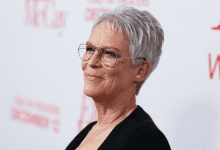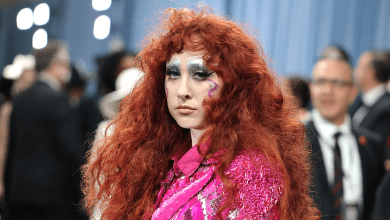King of the Hill Boss on Hulu’s No F-Bombs, Recasting, Animation Criticisms

In an era of reboots, sequels and seemingly never-ending franchises, the “why now?” of bringing a show like King of the Hill back is “the most important question,” says its new showrunner Saladin K. Patterson.
For the adult animated comedy, which debuted its story about a family living in the fictional town of Arlen, Texas, on Fox in 1997, the “why?” begins at San Francisco Sketch Fest 2017. That’s when co-creators Mike Judge and Greg Daniels did a table read of an episode from the original series, which had concluded its 13-season run seven years earlier.
“The fan response was just so strong that they realized there was still an appetite for these characters. People want to know what the characters are doing,” Patterson recalls to The Hollywood Reporter. “There are always memes online, [fans asking], ‘I wonder how Hank Hill will respond to this?’ That’s always a good sign.”
That journey to bringing back the show took six years from that moment to get a greenlight, and then two more to release it. In the meantime, the series — which picks up with Hank Hill returning from a decade-long stint living and working in Saudi Arabia — has returned following a new model for how TV is animated and voice-casted, a dramatic transformation in how series are released and consumed, and a culture of comedy that has undergone an expansion (and revaluation) of what audiences collectively find funny.
Patterson doesn’t shy away from those things on-screen in the writing or off-screen while talking about the returning series. Instead, he openly shares exactly how those things did — and didn’t — affect his pitch for a rebooted King of the Hill. That vision is what he chalks up to a return to the middle ground that acknowledges the overtone window on a lot of things have radically shifted.
The result is a reboot that works to be both what the animated series always was — a satire about a conservative father and his family in a small Texas town — and what the moment is, in an organic and authentic way. “[King of the Hill] was maybe about that common thread that goes through all these people,” voice star Toby Huss tells THR. “And this [reboot] is about going back and revisiting these people, and letting them sit in your life for half an hour at a time, and I think that’s a really special treat to give people.”
For King of the Hill’s return and the release of all 10 episodes now on Hulu, THR spoke to Patterson about revisiting Arlen and the series’ distinctive sense of humor; how the writing team brought the Hills and their community into the modern era; how the industry shifts brought the team into new choices from voice casting to art styling; honoring the characters of the voice cast that have since passed; and more.
***
You are a veteran of the sitcom space, with credits on Frasier, The Bernie Mac Show, Big Bang Theory, and more recently Shifting Gears. You also helmed The Wonder Years reboot. As someone so familiar with comedic sitcoms who has already helmed taking a classic into the modern day via reboot, what warrants King of the Hill‘s return for you?
To answer “why now?”, which is the most important question, for The Wonder Years, we were living in a time when the story of the Black middle class during the Civil Rights Movement hadn’t been told in that way before. The parallels between what was going on in society in the country in the late ‘60s and what was going on in the early 2020s were so in your face. It felt like good commentary to look back and to be able to look at the present in a somewhat similar way, but not quite as charged. With King of the Hill, when I sat down with Mike and Greg and they were meeting with me to potentially be the showrunner, I told them the things that stood out to me about why it was interesting to do this reboot now. In the original, the character of Hank Hill (voiced by Judge) had a strong point of view, and was a very strong character known for representing a common sense middle ground.
Whether you lean left or right, Hank always represented the common sense middle that satirized the extremes. But Hank was the one that was bringing the extremes towards the middle, and realized we can all agree on certain things. The backstory they came up with — which I think was very smart — was of sending Hank and Peggy (Kathy Najimy) away to Saudi Arabia to work on the Aramco base for about 10 years King of the Hill time then bringing Hank back to a community and country that has changed some. What I thought was smart about that is that Hank hasn’t changed that much. He comes back, but his common sense middle ground is not the middle anymore. The extreme has moved so far to the extreme that to them, Hank’s common-sense middle-ground looks like the other extreme now.
That felt like a good opportunity to make some good cultural social commentary. I specify “cultural” because a lot of people, probably me included, when we talk about the original, tended to say it was a political show that made political commentary. That’s really us projecting on the King of the Hill what we think and feel. The original touched upon politics sometimes, but the social commentary was more cultural. It’s more about a father raising a son, but society now saying how you raise a boy is different; a culture saying how you treat a woman is different. That was where the show was, but it’s also small relatable stories through the points of view of our characters. That’s what we wanted to make sure we maintain with this one. And taking the opportunity that we can now have our main character have a totally different not only view of culture, but way the culture views him. That’s where a lot of the comedic conflict comes from.
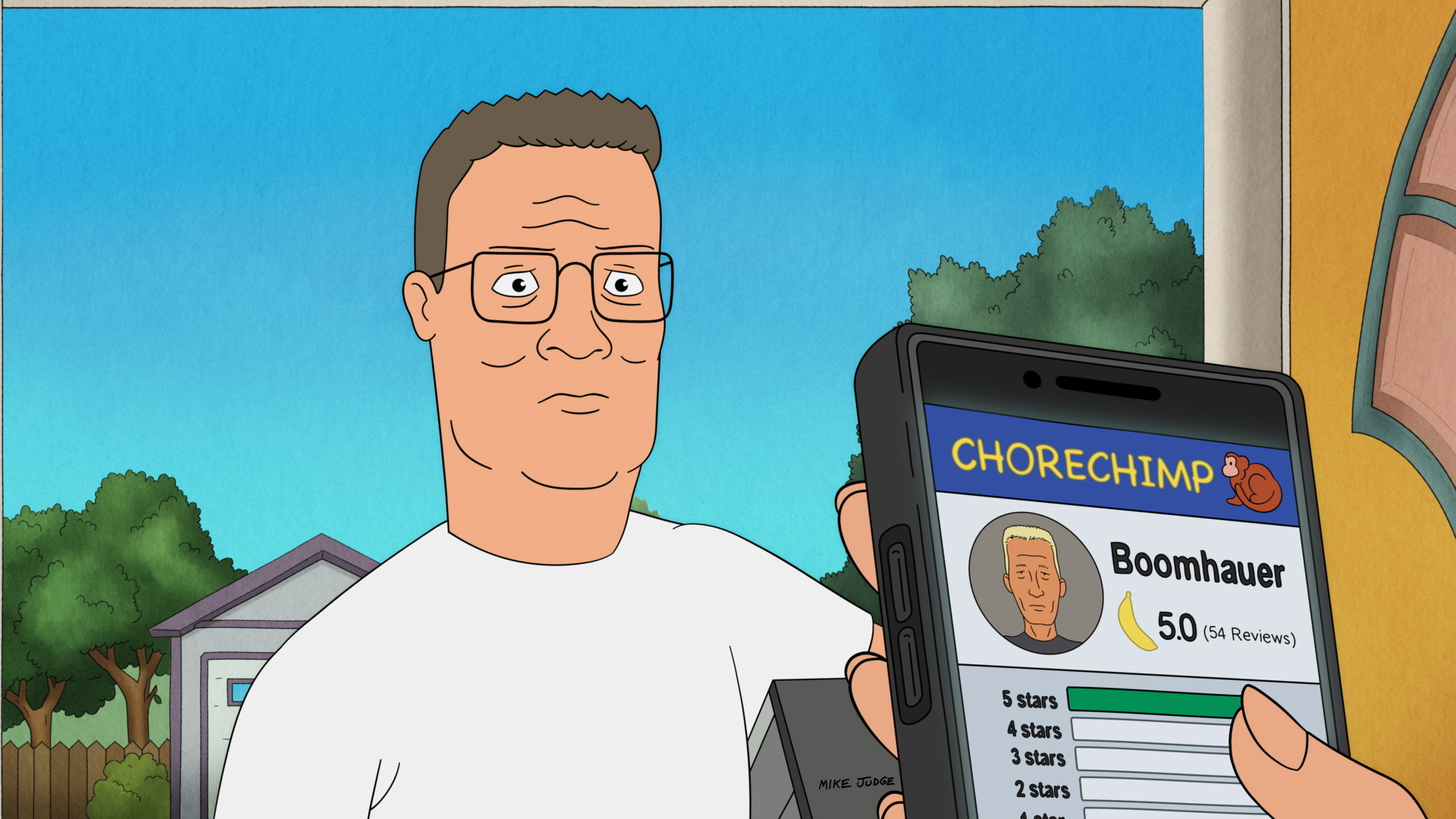
There’s a lot of ways the original show’s sense of humor is described by the people who made it and the people who watch it. Those might not always align because of how comedy ages, which underscores how hard a medium comedy is in terms of translation over time. But when you were talking to Mike and Greg, what was the central comedic tension of the original series, and how did that stay the same or change at all for this return?
I’ll answer it by using an example from the original. One of the quotes that always stands out to me was from the episode where Khan (Ronny Chieng) and Minh (Lauren Tom) first move in next door, and then Hank and Khan immediately butt heads because Khan is an asshole. Hank’s point of view is, “What kind of country is this where I can only hate a man if he’s white?” That speaks a lot to the irony that a character like Hank will find himself in. People will project onto Hank as a white man of a certain age at that time being Republican — he wouldn’t be called a Republican now — and living in Texas a lot of things that they think they know about him. So that when he does something, it’s interpreted based on what people think a character like him would feel.
But his point of view is, “No, no, I don’t hate him because I’m racist. I hate him because he is an asshole.” That’s where a lot of rich comedic irony lives, and that’s what I wanted to make sure we carried over into this version of it — putting Hank in situations where people are going to accuse him or judge him or make assumptions that are based on who they think he is, or who they think he’s supposed to be, and not based on who he actually is. Now he has to prove himself to be different, while not changing what he’s done. That’s very interesting to me, and that’s where I think the show lives when it lives at its best comedic potential.
Fox — like Adult Swim and MTV — carved out a unique space for adult animation that was really edgy and boundary-pushing, something Disney hadn’t really delved into until it acquired Fox titles. How did answering to Disney versus Fox, and a streamer versus a broadcaster, shape how you approached this show?
It’s a multi-layered answer. Yes, Fox back then with adult animation let certain shows really push the envelope. Family Guy really pushed the envelope. The Simpsons to a very measured extent. King of the Hill, though, never pushed the envelope in the same way, in terms of being in your face. But it may have pushed the envelope in terms of some of the social commentary.
So when we were doing it now for Hulu, under the Disney banner, on the one hand, the Hulu execs for the show were fans of the original, so we all were on the same page in terms of wanting to recapture what made the original special. But there were situations where the Disney of it all put some limiters on us that I know Fox would not have, even though we were on Hulu and streaming, which theoretically has broader S&P [standards and practices] than Fox. But for us, staying true to the show meant we weren’t ever going to be too gratuitous with the curse words and things, but we do take some liberties. The characters do curse in ways they can’t curse on broadcast. That being said, Hulu still made us go through and pull out all the F-bombs because they don’t want the TV-MA label, and it’s fine. Totally get it. It is what it is. I’m not a huge fan of shows pushing the envelope in that way anyway, so it wasn’t a big loss, but it was ironic, especially considering, like you said, the history of the show being on Fox where the whole purpose was to try to push the envelope as much as you could.
When King of the Hill was in its initial run on Fox, its first season was actually only like 12 episodes. But that and later seasons, which were 20-plus episodes released weekly in a time when people sat in front of TVs at a specific time each night. The return is a 10-episode binge drop on a streamer. Did the shift in platform and distribution model affect at all how you all thought about writing it now?
That question taps into something that’s much, much bigger that we’re all trying to figure out now and is the reason we went on strike; the actors went on strike; why there’s such a contraction in the industry in terms of production drying up; and why the studios were chasing the streaming model and then realized the streaming model can’t sustain itself. Everybody’s trying to figure out how to match audience viewing behavior to the way business models used to work. So a microcosm of that is this whole thing that a season is 10 episodes now, and that certainly affects the stories we can tell, but not all in a bad way. In some ways, 10 episodes is creatively more refreshing than having to do 22 episodes. Trust me, the unspoken secret that we always had was it’s hard doing 22 episodes, and by time you get to episode 17, you’re starting to repeat yourself probably. But monetarily speaking, that was a great model. Now for streamers like Hulu and Disney Plus, it’s a little different.
When we were breaking out the season arc, it certainly made us skip ahead, I think, in a way that we wouldn’t necessarily have skipped ahead in the first 10 episodes under the broadcast model. Think about the Connie (Tom) and Bobby’s (Pamela Adlon) relationship. We wanted the season to end with them getting together, so that meant, along the way, we had to jump that relationship ahead faster than we would have had we had 22 episodes to get them together. That fit to how we brought the stories and what we had to pick and choose in terms of what we showed. The word that comes to the top of my head is it makes you be more “efficient.” It also makes you figure out, assuming I want to get from A to B, what in between has to be shown to make it make sense when we get to B. Versus if I had to get to A to H, I have B, C, D, E, F and G to hit along the way. It makes us have to be a little more selective with what we have our characters experience if we’re trying to get them to the same place by the end of a season.
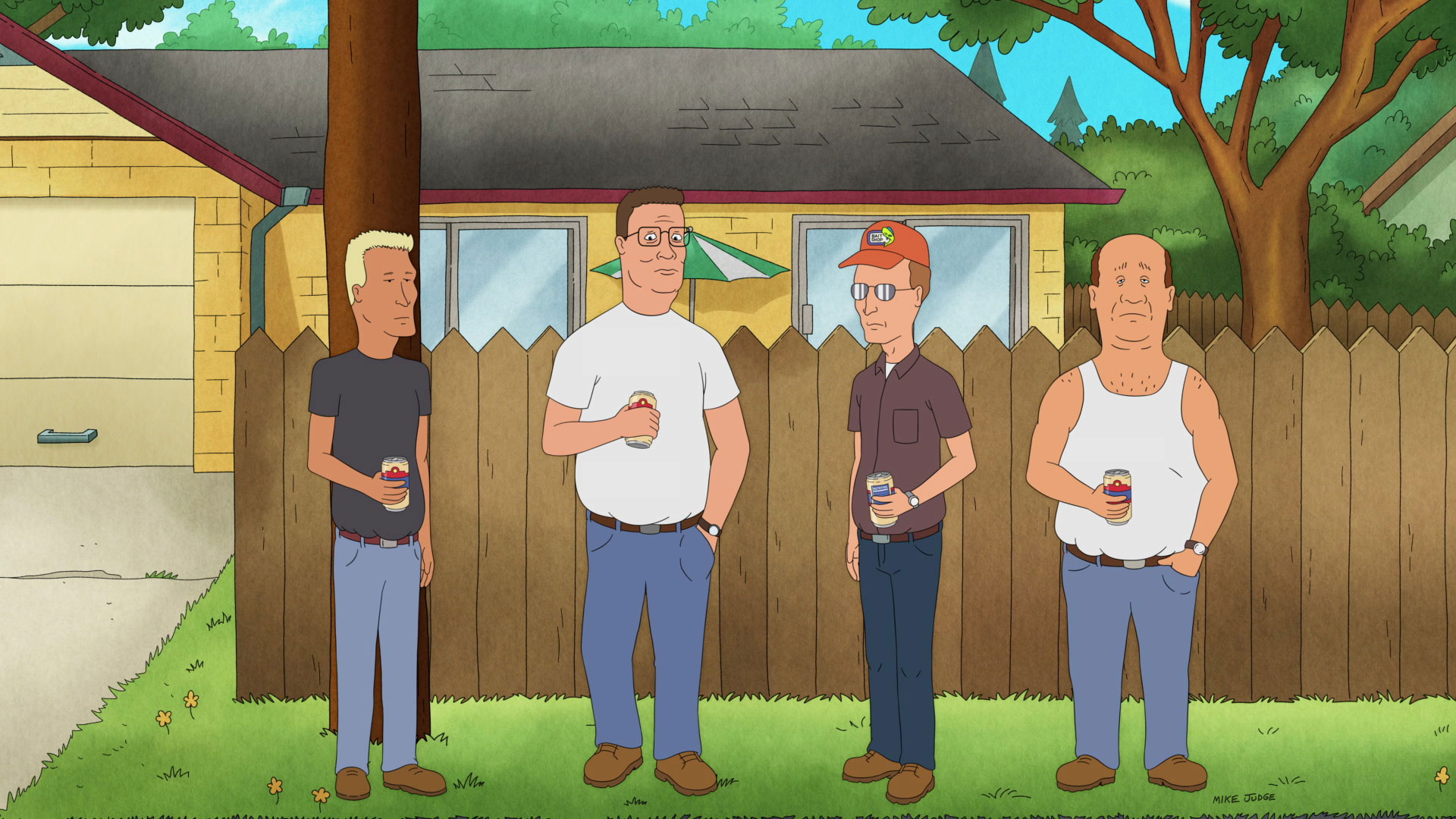
This show is not something entirely new for King of the Hill, but there are new elements that expand Hank’s universe. You do that by bringing in more characters, changing voice actors of others along with the rest of the industry, and adding new locations that offer different interactions. Most of the things you introduce are not outside of real, modern Texas culture and communities. Can you talk about how you approached expanding the Hills’ modern-era community?
Some of it is just along the lines of what you’re saying. We have an opportunity to do some stuff now under a different societal lens than the original show was under. Specifically, that’s both to casting people of color who are the same background as the characters that they’re portraying and casting a wider net to be able to include more people in the casting conversation. That was important because that’s become important on a global level in terms of TV shows. But then, like you said, in terms of the characters that then populate the world that Hank experiences, it’s not as simple as me saying I’m a Black writer and I want to see more Black characters in King of the Hill. King of the Hill had Black characters. Bernie Mac played a character; Chris Rock and Snoop Dogg. Fans of the OG series know that. But it’s about intent and purpose, too. That show lived in a world where the stories they were telling didn’t necessitate, necessarily, Hank interacting that much with other people. Now we feel like we just live in a different world.
The writing staff before we started all took a field trip to Dallas because we wanted to see what’s changed over the last 10 years. We visited restaurants, we went to the news station, the newspaper, we talked to people to ask them, “What are you reporting on? What are you talking about?” And it just came up that people are mixing more in Dallas. It kind of bucks the stereotype because people think things are so polarized. It gave us an opportunity to say, “All right, who would we like to see Hank interacting with — but for the purpose of showing Hank in these new environments in the same way we show him other in other environments while having a strong point of view, being someone who represents a common ground amongst people, and as someone who follows a certain set of rules that other people can rally around.” That felt like a good opportunity.
A Black barber shop is filled with people who also have similar points of view and, if not similar points of view, similar approaches to things, strong opinions, but welcoming to others because part of growth is also hearing from others, right? So that felt like a type of thing that we want to see Hank in. And I guess that boils down to: Where do we think fans will want to see Hank and who do we think fans would want to see Hank interact with? And as long as that fit the mold, that’s how we followed it.
Toby Huss was in a really unique position with this show’s return, both stepping back from playing Kahn and then continuing the role of Dale Gribble, who was voiced by the late Johnny Hardwick. How did you all work with Toby to handle the Kahn shift and then how did you land on the decision to continue on with Dale using Toby to voice?
Toby almost led the charge in terms of realizing it’s time to pass and let someone else play the voice of Khan. Toby’s a very sensitive, sensitive guy. He has his finger on the pulse of what’s going on. He’s a great voice actor. And our way of looking at casting is different, and Toby was so on board with that and championing that. When Johnny unfortunately passed away, we first and foremost wanted to see what’s going to honor Johnny and his family in the best way. Dale’s character was too important a character to what we were currently doing to let the character go away. So it felt like he still needed to stay an organic part of the show, so that meant carrying on. That comes with a lot of consideration, both creatively and financially in terms of Johnny’s family. So we first and foremost wanted to make sure that that was going to be handled in the most respectful way and a way that we’d be proud of.
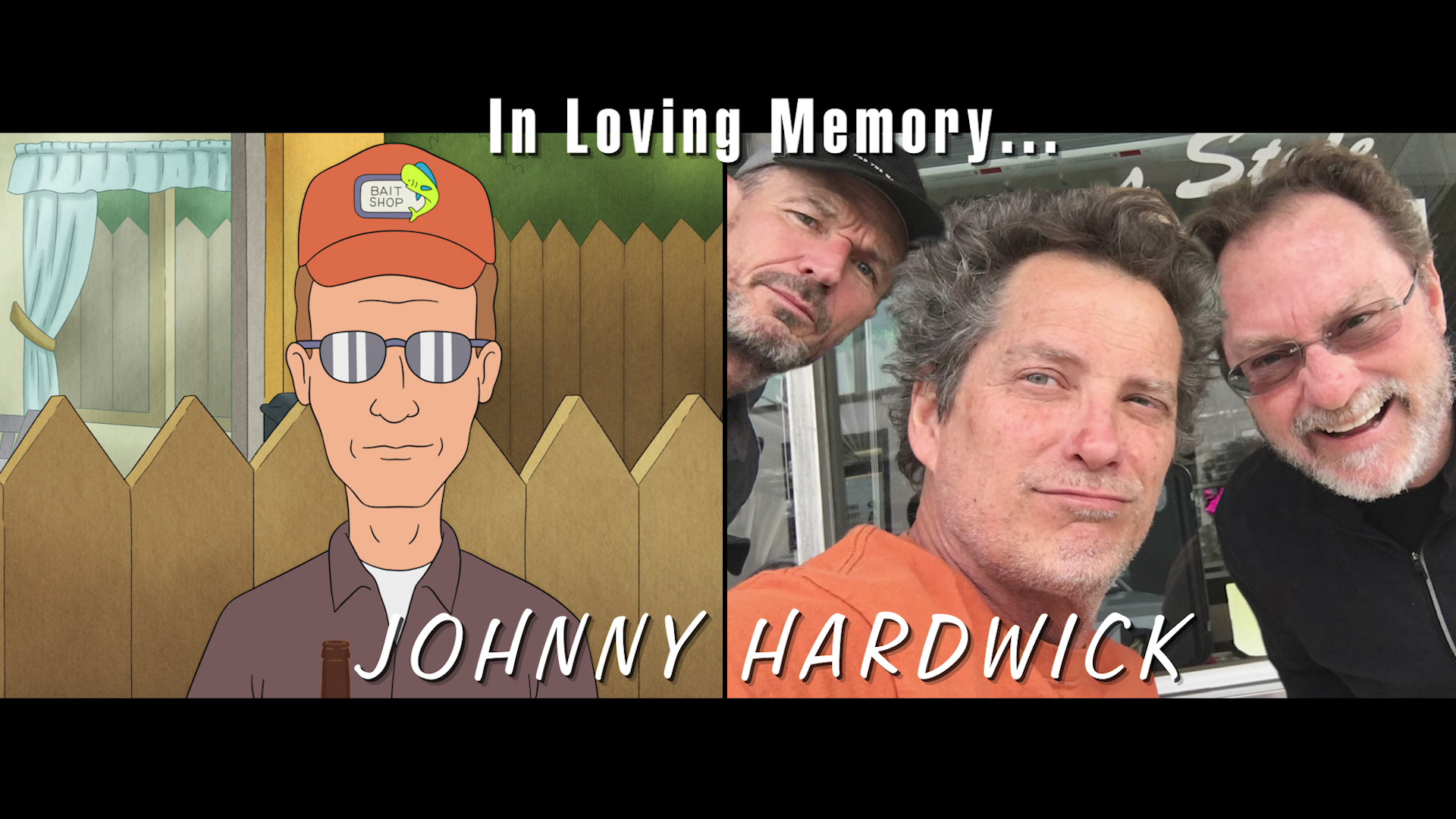
After that, it became, creatively, what’s best for the show? Then hopefully those things overlap. We looked at all the options you would think we would look at; recasting, using some sort of other technology to try to keep the voice going. What felt the most respectful and also creatively strong was taking Toby, who was a friend of Johnny’s, who was like a brother to Johnny in certain ways, and having him do it in a way that would pay homage to Johnny. What people don’t know is the cast will always take turns doing each other’s characters like at a table read. That was a part of the family dynamic, anyway, so that felt like it was a natural extension of what the cast did amongst themselves. That’s also why Toby was a good choice.
Among the cast who are no longer with us are Brittany Murphy and Tom Petty, who were behind the characters of Luanne and Lucky. Did you consider bringing them back and how did you want to pay tribute to them even though they aren’t present?
As you can imagine, a lot of thought went into that. The Luanne character was so important in the original. Brittany Murphy unfortunately passed away as they were in the original run, and they had to deal with it. They had already been dealing with her being so busy because of her movies and things, that the characters had already been phased out a little bit towards the end. Our decision was, do we revitalize that character or not? The analogy that I’ve been using is as a sports fan, sometimes you have a player who has meant so much to a team and an organization in terms of what they accomplished and what they represented, that when they are no longer with the team, the best thing you can do to honor them is to hang the jersey up in the rafters and to retire the number. In the case of Brittany and Tom [Petty], that felt the most respectful way to honor them. That being said, there’s still going to be that void, and we kept that they have existed in this universe, and that they still do exist, even though we don’t see them. Hopefully, if fans stick around and Hulu allows us to do more episodes, you’ll see a way that we have come up with to address where they are, at least in a reference way.
We spoke before about the trickiness of how humor ages, and one of the ways that that appears in sitcoms is pop culture references — something King of the Hill has done from the very beginning. You keep that tradition up in this season, from The Summer I Turned Pretty to Ted Lasso. Topically, you’ve also got more broad signifiers of the time: ethical nonmonogony, AI, parenting vlogs, Jeffrey Epstein. Were you at all concerned about how that might in the future age your show? Or did grounding the Hills in the current moment remain more important?
So not only were we concerned, there’s an extra level of concern that you have for animation, because it takes nine months for an episode to kind of come out when they’re animated. Not only do we run the risk of dating ourselves in terms of future people watching the show as an, “Oh crap, that’s such a 2025 reference,” the first time people see it, the reference could be old, because it was nine months later. So that was something that we had to be very careful with.
And that’s why, outside of South Park, most animated shows don’t do it. The Simpsons do it, but they’re in a unique situation and they’ve been doing it for 30 years. So I’ll say this, when we did make a pop culture reference, it first and foremost had to feel true to the character that was saying it. It couldn’t be the show making the reference. Sometimes when The Simpsons does it, the show is making pop culture references. For us, the character had to be doing it. Then from my personal point of view, if we’re satirizing it, it’s OK, because now we’re making a comment about something, and it won’t feel so dated. Hopefully, when it’s watched in the future, it’ll feel like we were making a statement about the time period that this show existed. That doesn’t mean The Summer I Turned Pretty won’t feel like a very dated reference 10 to 20 years from now. But hopefully it’ll still be funny. If it’s satire, it can still be funny and dated. If it’s just gratuitous, it’s only going to be dated.
Viewers likely have questions about how you bring a number of these characters back, but Dale is really a stand out, especially in the Bush Library visit episode. He’s a conspiracy theorist, and has always pushed misinformation and disinformation in ways people likely thought were harmless, but we’re currently seeing isn’t so harmless. How did you think about writing him in this moment? Did you feel any pressure to tone him down, to challenge him any more than Hank already does?
When I first met with Greg and Mike and we talked about how I would approach showrunning, I used Dale as an example because I felt the strength of the show and addressing the why now of it all is that Hank stays the same Hank, but his middle is not the middle anymore. Dale staying the same Dale was a way to passively make social commentary about how crazy reality has become to where now people take conspiracy theories much more extremely than Dale and treat them as fact and truth to where Dale can be the one to point and say, “I’m not that crazy.” That is such a unique position for Dale to be in, even though he’ll always be the craziest. And we get our comedic conflict and his conflict with Hank from that. Living in the world where Dale’s not the craziest person in the world is just a new thing for Hank to experience, too, which we tried to tap into with the Bush Library stuff. I was of the opinion, let’s leave Dale where he is because that gives us an opportunity to in and of itself make a statement.
I have to ask about is the art styling for this because that’s really part of how you tell story in animation, and is also impacted by the industry moment you’re making a show in. The original series is real simple 2D, but you make some changes for the reboot. Can you talk about the decision-making behind that?
I do want to address the art because that’s probably been the most universal thing that has shook the new audience when they saw the previews and things like that — that the animation looks so different. I get it, and I get why people who want to revisit the show may be taken aback a little bit. The new animation style is all digital now, but the truth of the matter is, it is impossible to do the show now the way it was done then. The hand-drawn animation, the water colors, those don’t exist anymore. If they exist, they certainly don’t exist at a cost where you can do a TV show. So it has to be updated, and so we updated it with the current style and makeup of animation that animated shows do. I admit it does look different and maybe jarring to some people. I just want to put out there that even though it’s updated, we still went and tried to give it an age old look, to make it feel more like the color palette and the landscape of the original, more so than other shows. We certainly went through a lot of back and forth with the background designers and things like that, to make our colors feel closer to what they felt in the original and the tones and things the most that we could.
You end with “The Sound Investment,” which explores pensions, start-ups, and stark market manipulation. There’s different outcomes for folks, but John Redcorn ends up getting an investment from The Hills. You also feature a tribute card to Jonathan here. Can you talk about that and if you’ve thought about how the show might move forward without Joss?
The season 14 finale was chosen as the episode where we paid tribute to Jonathan Joss with a memoriam end card because it was the episode that featured him the most. It also felt fitting because his tragic passing was so recent and the finale was the last episode produced. If there are future seasons, we will choose a way to address the Dale/Nancy/Redcorn love triangle that highlights the compassion that Jonathan always brought to the character.
***
King of the Hill is now streaming on Hulu.
Source: Hollywoodreporter
HiCelebNews online magazine publishes interesting content every day in the TV section of the entertainment category. Follow us to read the latest news.
Related Posts
- Mark Ruffalo Returning as the Hulk for ‘Spider-Man 4’
- Doechii Announces 12-Stop Live From the Swamp Tour: “The Final Chapter of This Era”
- Katt Williams Will Be an On-Course Correspondent for PGA Tour Playoffs Event (Exclusive)
- Chappell Roan Reveals Her Second Album “Doesn’t Exist Yet” After Releasing Three New Singles
- ‘The Gilded Age’ Director Salli Richardson-Whitfield on Key Character’s Fate Going Into Finale: “No One Saw That Coming”

